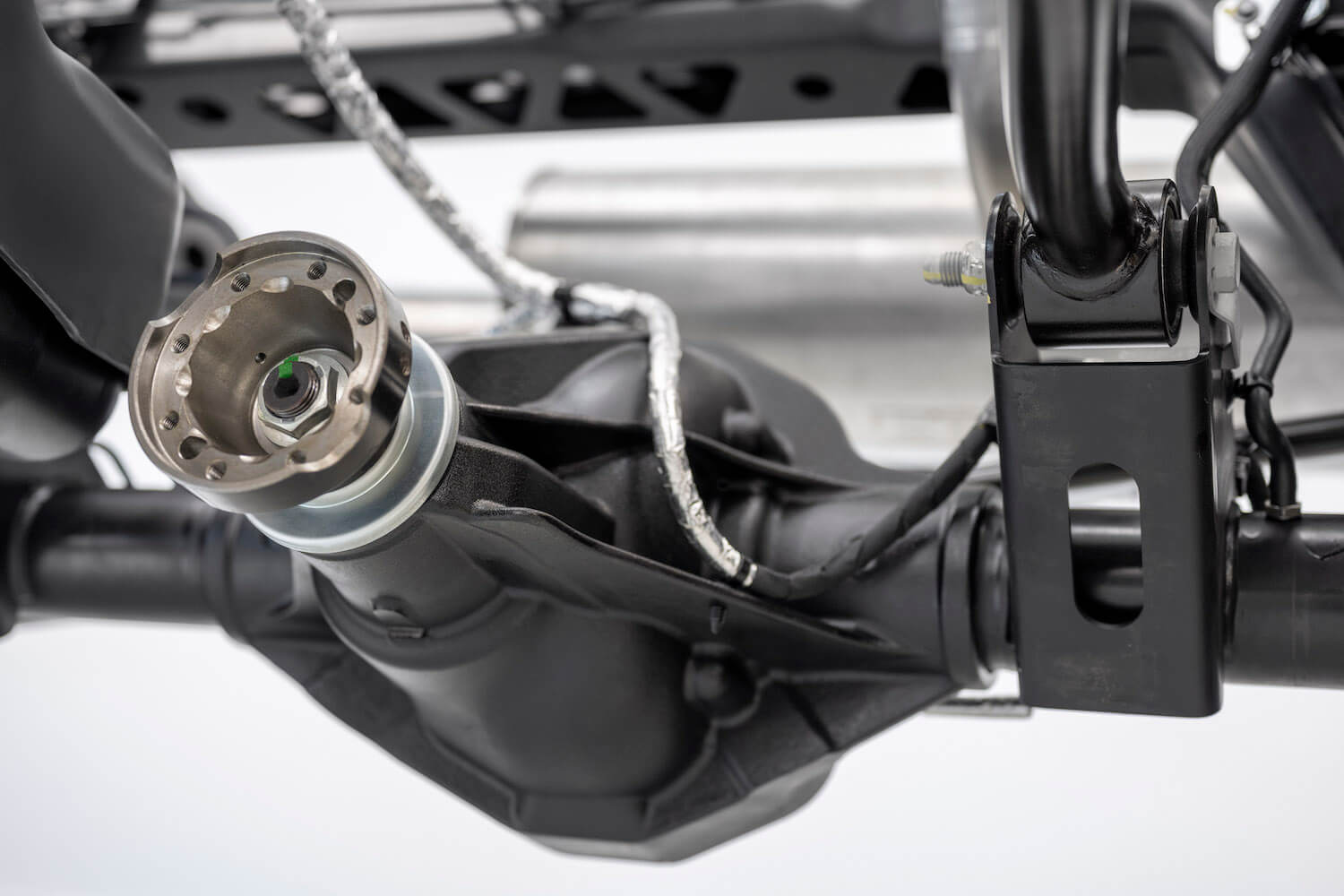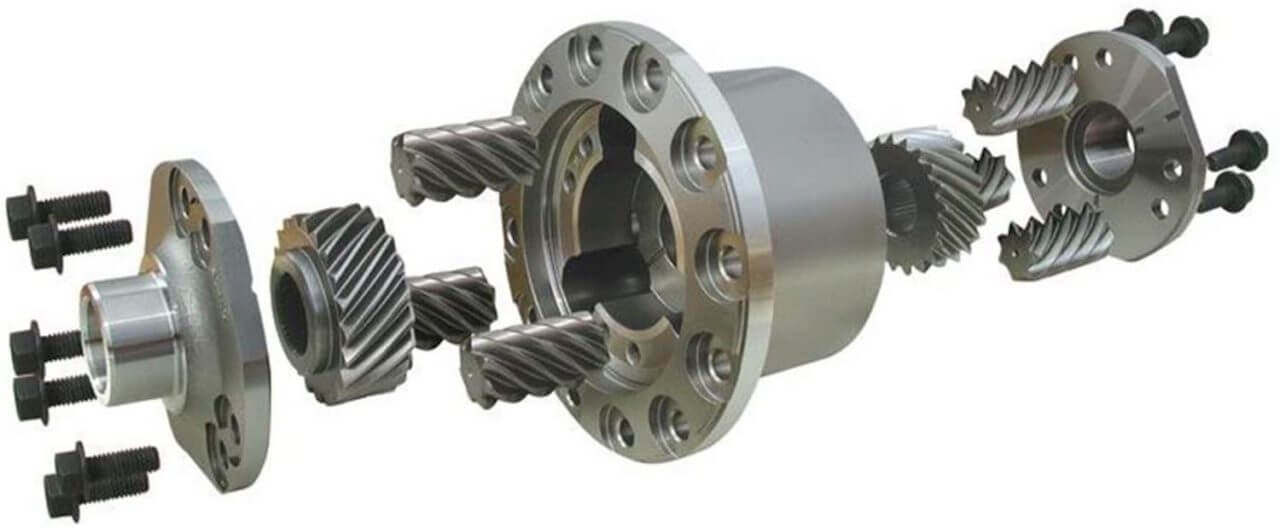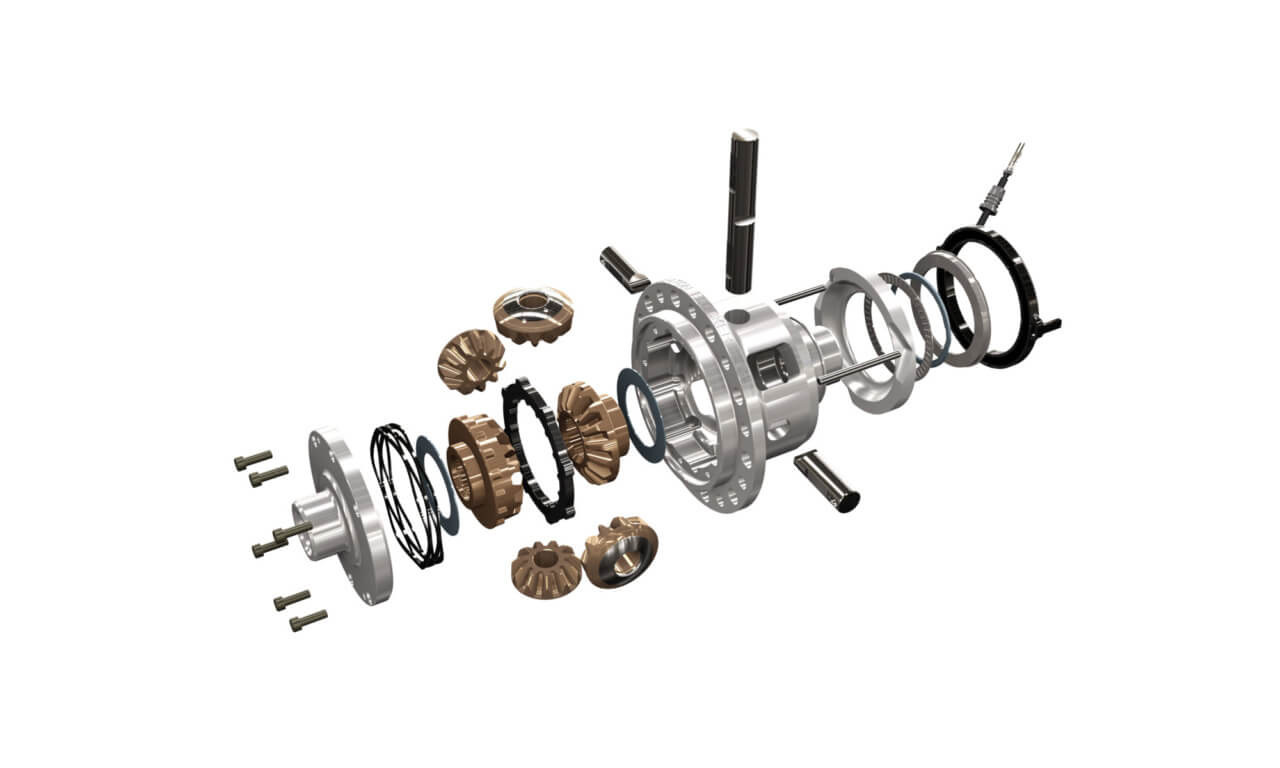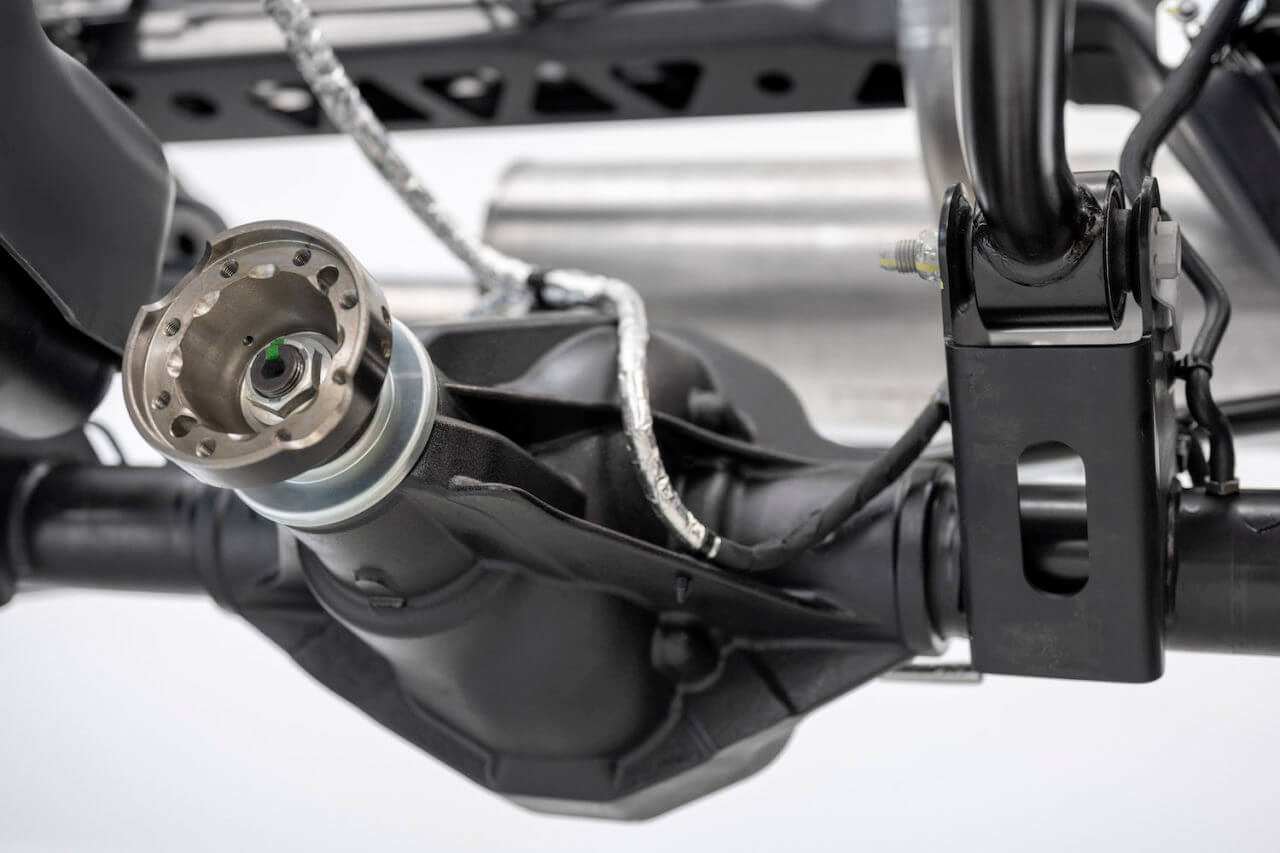
A limited-slip differential, also known as an LSD, is used to lock both wheels on a single axle and, as the name would imply, limit the amount of slip. By using clutches or gears, the LSD allows for varying amounts of power to be sent to each wheel. In essence, this means that when one wheel loses traction, the other wheel can still receive power and propel the vehicle forward.
Locking differentials, on the other hand, can lock both wheels completely together and ensure that they both receive equal amounts of power. This can be extremely helpful in low-traction conditions such as mud, sand, or snow, where one wheel almost always has less traction than the other.
Both LSDs and locking differentials have their pros and cons, as well as intended application and use case scenarios. LSDs and locking differentials are the two most common types of upgraded differentials, and although some cars come equipped with one or the other from the factory, most cars don’t and use an open differential.
Open differentials are great because they’re simple, cheap to produce, and they don’t require a lot of maintenance or upkeep. They’re also very well-suited for everyday driving in normal road conditions when you don’t need the extra traction or grip.
The advantages of LSDs and locking differentials become apparent when you encounter slippery surfaces or you need more grip. Typical use cases include off-roading where one wheel is almost always slipping, or racing and drifting where the car is on the ragged edge and every bit of grip means you can get on power sooner and extract every ounce of performance available.
Ultimately, deciding between the two comes down to your specific driving needs and requirements. By understanding the differences between these two types of differentials, you can make an informed buying decision and upgrade your vehicle accordingly. If you were wondering how limited slip differentials and locking differentials are different, this article will explain that in great detail.

Advantages & Disadvantages of Limited-Slip Differentials
There are three main types of LSDs. A mechanical LSD is also called a multi-plate clutch differential because it uses a clutch with multiple discs inside and pressure rings to dictate when to open or lock the differential. The differential operates purely mechanically and the diff will lock as the car is accelerating (or decelerating if it’s a two-way mechanical LSD).
Some newer cars have what’s called an eLSD (an electronic LSD). It works similarly to how the mechanical LSD does, but instead of relying on mechanical force, the diff itself is controlled by computers. A computer will open or close the differential depending on the data it receives from various sensors such as wheel speed, wheel slip, slip angle, and such.
Viscous LSDs use multi-plates similar to a mechanical LSD, but the multi-plate clutch in a viscous LSD is bathed in oil. When one wheel spins faster than the other wheel, the fluid will equalize the rotational speed and act as a mediator between the two, essentially “locking” them together or at least replicating the effect of a locked diff.
Viscous LSDs are smoother than mechanical LSDs and they require less maintenance, but they can never lock up and send 100 percent of the torque to the wheel that has traction. This is partly because the fluid inside will always soak up some of the torque and partly because there needs to be an initial difference in rotational speed between the two wheels in order to engage a viscous LSD.
Torsen or Helical LSDs use worm gears to lock the differential and distribute torque. They generate very little noise and don’t require much maintenance at all, making them ideal for road cars. Unfortunately, because of their design, if one wheel is in the air or it has zero grip, the diff won’t lock and it won’t send torque to the wheel with traction. The torque bias is also predetermined by the LSD design and it cannot be altered.
Each of the three types of LSDs outlined above serves a slightly different use, but they’re all excellent for applications in road vehicles since they’re generally very quiet, preserve tire life, and can greatly aid traction and extract grip from most road surfaces.
The downsides are that they require a bit more maintenance than traditional open differentials, and that they’re quite expensive because of their complicated design. Because of that, you only really see LSDs in performance road cars or trucks designed with off-roading in mind.

Advantages & Disadvantages of Locking Differentials
A locking differential can lock the axles together and provide all of the available torque to the wheel that has traction. In essence, it locks the axle such that one wheel can’t spin unless the other one spins at the same rate.
You might think a locking diff is awful when turning, but you’d be wrong. Because of the way it’s designed, a locking diff behaves like an open differential when turning, allowing the wheels to spin at different rates. The diff can be mechanically locked when traction is needed.
Automatic locking diffs don’t require any driver input and will lock the axles together when torque is applied. A driver-selectable locking diff allows the driver to activate the locking diff by pushing a button inside the cockpit. Older off-roaders have a lever instead of a button to engage the locking diff.
The main advantage of a locking diff is that it enables true two-wheel drive per axle since the wheels are physically locked together. They’re also very durable because they have very few moving parts and they require almost no maintenance. Because of this, they’re amazing in off-roading scenarios where durability, reliability, and maintenance-free are key.
However, locking diffs don’t come without their disadvantages. They typically wear out tires much quicker when compared to LSDs or open differentials, and because of the way they’re designed and how they engage/disengage, they can be quite noisy and clunky at times.

The Verdict on Limited-Slip & Locking Differentials
Ultimately, the matter of locking differential vs limited slip diff comes down to the way you drive, where you drive, and what you drive. You typically see LSDs on sports cars and performance cars, while locking differentials are predominantly seen on off-roaders and pickups. Limited slip vs locker essentially boils down to personal preference, use case, as well as cost.



2